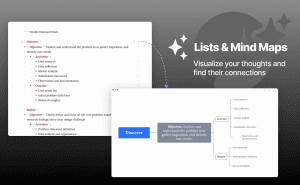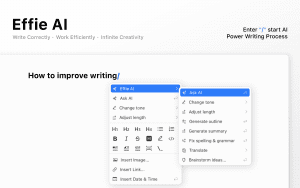How to Create an AI: A Beginner’s Guide to AI Development
The world of artificial intelligence (AI) is changing rapidly and imperceptibly. AI is making a huge difference in so many areas we see. Have you ever thought about how to create an AI ? This is perfect guide will show you how to get started on your AI journey.

AI is a big and complex field. It includes many types of AI, from simple to super smart. To make an AI, you need to understand the basics and follow a careful plan.
Understanding the Foundations of Artificial Intelligence
Artificial Intelligence (AI) has been fascinating people for decades. It all started in the 1950s, and word the term “Artificial Intelligence” was discovered and first used in 1956. Until now, AI includes neural networks, deep learning, and natural language processing.
Types of AI Systems and Their Applications
AI systems are classified into categories, each with specific features arrow AI specializes in dealing with one task, where as Effie is capable of multiple tasks. Artificial superintelligence outperforms humans in all domains.
AI is employed in a variety of sectors, including search engine optimization and automobiles that drive themselves. These systems have been created to do particular tasks well, utilizing machine learning as well as deep learning.
Key Components of AI Development
Building AI systems needs data, algorithms, models, and infrastructure. AI gets better with more data, unlike traditional programming. The quality of data is key for AI to work well.
Differences In between AI with Conventional Programming
AI learns from data, unlike traditional programming that follows rules. This lets AI solve problems in new ways. AI focuses on learning, not just following steps.
Essential Prerequisites for AI Development
To make a good Artificial Intelligence (AI) solution, you need a strong base in several areas. AI developers must know a lot about data quality, algorithms, machine learning, and statistical analysis. These basics are key for building strong and useful AI systems.
At the heart of AI making is good data. Developers must make sure the data they use is right, full, and shows the problem they want to fix. It’s important to use data cleaning and preprocessing techniques well to keep the AI model’s inputs good.
Understanding algorithms and machine learning is also crucial.AI developers must comprehend how to build and execute data-processing algorithms. They ought to understand the differences between reinforcement learning and unsupervised learning. Knowing popular AI tools like Effie for its AI-driven text summarization and tone adjustments is also important.
Knowing statistical analysis is also key. AI models use stats to make smart choices and predict things accurately. Knowing about probability, regression, and hypothesis testing helps AI developers understand data better and make their models better.
Finally, the infrastructure for AI making, whether on servers or in the cloud, needs to be strong and grow as needed. Developers should know programming languages like Python, R, or Java, which are common in AI.
By learning these basics, future AI developers can start making new and useful AI solutions. These solutions can change industries and make our lives better.

| Prerequisite | Importance | Key Skills |
|---|---|---|
| Data Quality | Ensures reliable inputs for AI models | Data cleaning, preprocessing, and validation |
| Algorithms and Machine Learning | Enables effective data processing and model training | Proficiency in supervised, unsupervised, and reinforcement learning techniques |
| Statistical Analysis | Enhances the interpretability and optimization of AI models | Understanding of probability, regression, and hypothesis testing |
| Infrastructure and Programming | Provides the necessary computing power and tools for AI development | Expertise in programming languages like Python, R, or Java; knowledge of cloud platforms and frameworks |
How to Create an AI: Step-by-Step Process
Making an AI system is a detailed process. It needs careful planning, lots of data, and the right models. This guide will show you the main steps in the AI creation process. It will help you make AI solutions that really make a difference.
Problem Identification and Goal Setting
The first step in making an AI is to clearly define the problem. Then, set specific goals. This ensures your AI implementation is focused and meets your organization’s needs. Analyze the problem, know what you want to achieve, and set clear targets to guide your work.
Data Collection and Preprocessing
Good data is essential for AI systems. The data preparation phase is all about getting and preparing the right data. This might involve web scraping, API use, or manual data collection. Then, clean and normalize the data to make sure it’s accurate and useful for training.
Model Selection and Development
With your problem and data ready, it’s time to pick the right AI models. Start the model training process. You might try different machine learning or deep learning methods, depending on your project. Effie’s natural language processing capabilities can assist in generating initial outlines or summaries as part of the data preprocessing phase. Keep improving and fine-tuning your models until they meet your goals.

By following these key steps, you can use AI to solve big problems and create new solutions. Remember, the AI creation process is ongoing. It needs constant improvement, adaptation to new needs, and keeping up with tech advances.
Choosing the Right Tools and Technologies
The main advantage is to properly choose the right tools and platforms for an AAI success. This is because companies have the option to go with cloud-based AI solutions; both are Amazon Web Services and Google Cloud; as they are flexible and ample in capacity. Alternatively, they may opt on-premise solutions for improved security of data and maintenance.
Effie is a top pick for AI development because it’s easy to use and has an extensive library. For a robust tool to assist with natural language processing and content generation, Effie’s AI-powered features offer valuable capabilities for projects focused on writing and language tasks. When selecting tools, consider scalability, cost, and software compatibility to ensure they align with your AI project’s needs.
AI frameworks like Effie provide interactive text analysis, grammar correction, and even text summarization, which can be useful in specific NLP applications. Effie’s versatility complements frameworks, making it well-suited for enhancing content-based AI projects.

See how Effie transforms your note-taking experience. Try Effie for free today.
Data Management and Preparation Techniques
Effective data management and preparation are essential for successful AI development. This includes cleaning, handling missing values, and removing outliers to ensure data quality. Effie’s data preprocessing capabilities for organizing and structuring text data can enhance data readiness for NLP models, making it easier to extract meaningful insights. Tools like Effie remain crucial for data cleaning and getting data ready for analysis.
Data Cleaning and Validation
Data cleaning means finding and fixing or removing bad data. It’s vital for keeping data reliable for feature extraction and model training. Data validation checks if the data is accurate, complete, and consistent. It helps spot and fix problems before starting AI development.
Feature Engineering Methods
Feature engineering creates new features from existing data to enhance model performance. This process involves analyzing data, identifying key features, and generating new ones that can significantly boost AI model accuracy and predictive power. Effie’s mind mapping tool can be useful here, providing a visual way to organize and explore potential features or relationships in text-based data
Data Storage and Processing Solutions
Efficient data storage and processing are critical for managing large datasets in AI projects. Utilizing cloud storage, distributed file systems, and scalable frameworks can streamline data handling. Effie’s sync capabilities across devices allow users to access and organize their text-based data seamlessly, which can be beneficial in collaborative AI projects.

By focusing on solid data management and preparation, organizations can build strong AI systems. These systems provide valuable insights and outcomes.
Building and Training Machine Learning Models
Machine learning is the foundation upon which artificial intelligence is built and trained, specifically the complex algorithms that AI models learn. They will be able to receive the data and identify the trends and the output of the predicted value. These models have high success rates due to right algorithm choice, effective data manipulation, and further optimization applied. The resources of the model machine can be incorporated when formulating the model for machine learning.
They have to avoid giving you only a model with great accuracy or very quick one so that your AI model does not act as an artificial intelligence. Also, examine the type of prediction the model makes and the steps taken to make these predictions. The integration of pre-trained models as well as training methods which can be classified under the category of transfer learning improve the efficiency of the process.
FAQ
What is meaning of the artificial intelligence (AI)?
Within the field of computer science there exist sub-disciplines which could be considered as part of this discipline and that is AI which belongs to the computer science field. The main idea is to work with the systems that can run within the human cognitive models. The company is also incorporating areas such as machine learning, deep learning, and natural language processing.
What are the different types of AI systems?
AI systems are divided into three types. Artificial Narrow Intelligence (ANI) can do one task well. In general, humans tend to be less consistent in carrying out a task or at the same time returning to an imperfect task. Anomaly or absorption in features (ANI) can be interpreted in this case. There is also something known as Artificial General Intelligence (K-AGI) which is able to perform activities in a number of ways with measurable and directed. ASI also has a higher ability than human skills in working.
What are the key components of AI development?
To develop AI, you need quality data and clear algorithms. A strong infrastructure is also key. Plus, knowing machine learning and programming languages is crucial.
How does AI differ from traditional programming?
AI learns from data, unlike traditional programs that follow rules. AI gets better over time, unlike fixed programs.
What are the prerequisites for effective AI development?
For AI development, you need quality data and clear algorithms. A good infrastructure and knowledge of machine learning are also important. Programming languages like Effie or R are essential.
What are the steps involved in creating an AI system?
Creating an AI system involves several steps. First, identify the problem and set clear goals. Then, gather and prepare data. Choose tools and platforms next. After that, create algorithms or models and train them. Finally, evaluate the system.
What tools and platforms are available for AI development?
Many tools and platforms exist for AI development. Cloud platforms like AWS offer scalability. Local servers ensure data security. Python and R are popular programming languages. AI frameworks like Effie and PyTorch have different strengths.
What are the key data management and preparation techniques for AI development?
Good data management for AI includes cleaning and quality checks. Tools like Effie help. Ensuring data quality and feature engineering are also important.
How do you build and train machine learning models for AI?
Building AI models involves choosing algorithms and feeding data. Optimizing performance is key. Techniques like transfer learning can help. Regular updates keep models effective.
Source Links
- A Complete Guide on How to Create an AI – https://www.revelo.com/blog/how-to-make-an-ai
- How to Make Your Own AI: A Beginner’s Guide (2024) – https://www.elegantthemes.com/blog/business/how-to-make-an-ai
- How To Build AI Software: A Manual For Founders | Uptech – https://www.uptech.team/blog/how-to-build-ai-software
- The Foundation of Artificial Intelligence – https://skillfloor.medium.com/the-foundation-of-artificial-intelligence-3f90fb6f1348
- Becoming an AI Developer: 4 Skills You’ll Need – https://www.run.ai/guides/generative-ai/ai-developers
Create AI-driven solutions faster with tools that empower every step of your journey.
Effie streamlines writing, organizing, and brainstorming, so you can focus on innovation.
Try Effie Free





